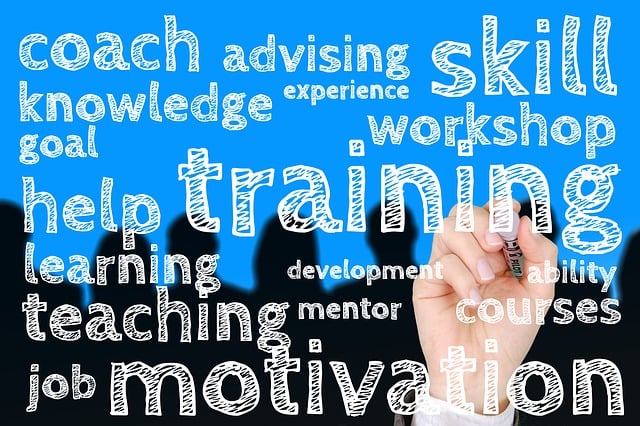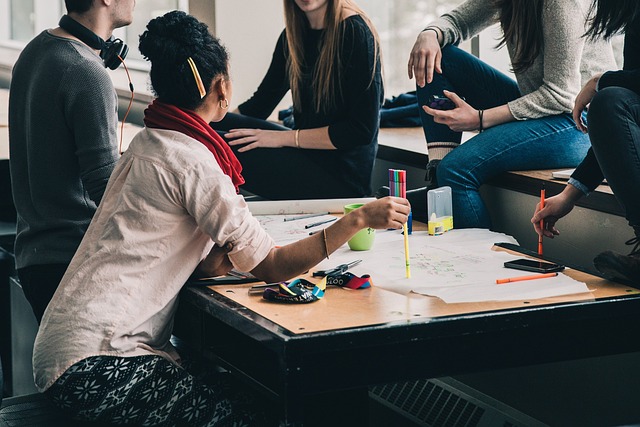Have you ever found yourself stuck in a teaching rut, searching for fresh and innovative ways to engage your students? Look no further! In this article, we will explore a lesson plan specifically tailored to enhance brainstorming sessions, allowing you to ignite creativity within your classroom. With the power of effective brainstorming, students will unleash their imaginative thinking, develop problem-solving skills, and foster collaborative learning. So, get ready to revolutionize your teaching strategies as we dive into the secrets of a successful brainstorming session.
Contents
- 1. Understanding the Power of Brainstorming: Unleashing Creativity in the Classroom
- 2. Techniques for Setting the Stage: Creating an Optimal Environment for Brainstorming
- 3. Preparing for a Successful Brainstorming Session: Step-by-Step Guide for Teachers
- 4. Facilitation Strategies: Encouraging Active Participation and Diverse Perspectives
- 5. Nurturing Innovative Ideas: Effective Feedback and Validation Techniques
- 6. Overcoming Obstacles: Addressing Challenges and Fostering Collaboration
- 7. Incorporating Technology Tools: Enhancing Brainstorming Sessions for Modern Learners
- 8. Engaging Beyond the Classroom: Extending Brainstorming Skills to Real-World Applications
- Frequently Asked Questions
- Future Outlook
1. Understanding the Power of Brainstorming: Unleashing Creativity in the Classroom
Brainstorming is a powerful technique that can unlock students’ creative potential, transforming the classroom into a hub of innovation and imagination. By encouraging open discussion and free-flowing ideas, brainstorming provides an inclusive platform for students to contribute their thoughts and build upon each other’s ideas. Collaborative brainstorming sessions can foster a sense of community and enhance communication skills, while empowering students to think outside the box and explore unconventional solutions.
- The Benefits of Brainstorming in the Classroom
One of the key advantages of incorporating brainstorming techniques in the classroom is that it promotes critical thinking and problem-solving abilities. Through brainstorming, students can analyze complex problems from different perspectives and develop innovative solutions. This encourages them to challenge their own assumptions and broaden their understanding of various topics. Additionally, brainstorming nurtures teamwork and cooperation among students, as they learn to listen, respect, and build on each other’s ideas. This collaborative atmosphere not only enhances their social skills but also instills confidence and self-expression, creating a safe space for students to freely share their thoughts.
- Strategies to Maximize Brainstorming Sessions
To make the most out of brainstorming sessions, educators can follow certain strategies. Firstly, setting clear guidelines and expectations ensures that students understand the purpose and rules of brainstorming, enabling a more productive session. Secondly, using visual aids and multimedia resources can stimulate creativity and inspire students to think beyond the conventional. Additionally, incorporating technology tools and online platforms can encourage remote collaboration and engagement. Facilitators should also create a non-judgmental environment, encouraging all ideas and emphasizing that there are no wrong answers in a brainstorming session. By employing these strategies, educators can unleash the full potential of brainstorming, transforming the classroom into a vibrant hub of creativity.
2. Techniques for Setting the Stage: Creating an Optimal Environment for Brainstorming
Brainstorming is a powerful technique for generating creative ideas and solutions. To maximize its effectiveness, it is important to create an optimal environment that fosters open communication and encourages everyone to freely share their thoughts. Here are some techniques that can help set the stage for successful brainstorming:
- Create a relaxed atmosphere: Make sure the space is comfortable and inviting. Consider using soft lighting, comfortable seating, and pleasant background music to put participants at ease.
- Remove distractions: Minimize interruptions by turning off phones and other electronic devices. This will help maintain focus and allow participants to fully engage in the brainstorming process.
- Set clear objectives: Clearly define the goals and objectives of the brainstorming session. This will provide a clear direction and focus for participants, ensuring that their ideas are aligned with the purpose of the session.
Furthermore, it is crucial to establish a positive and inclusive atmosphere where all ideas are valued. Here are some additional techniques to consider:
- Encourage active participation: Create an environment where everyone feels comfortable contributing their ideas. Encourage participants to actively listen and build upon each other’s ideas, fostering a collaborative spirit.
- Use visual aids: Consider using whiteboards, flip charts, or Post-it notes to document ideas visually. This not only helps participants visualize concepts better but also allows for easy organization and categorization of ideas.
- Embrace diversity: Ensure diverse perspectives are represented in the brainstorming session. This can include individuals from different departments, backgrounds, or levels of expertise. The inclusion of diverse voices can lead to a richer and more innovative idea generation process.
3. Preparing for a Successful Brainstorming Session: Step-by-Step Guide for Teachers
Brainstorming sessions are an excellent way to foster creativity and critical thinking in the classroom. To ensure a successful brainstorming session, follow these step-by-step guidelines:
1. Define the objective: Clearly state the purpose and goals of the brainstorming session to provide focus and direction. Encourage students to think outside the box and come up with innovative ideas.
2. Create a supportive environment: Set up the classroom in a way that encourages collaboration and openness. Arrange chairs in a circle or small groups to promote conversation. Consider using a whiteboard or flipchart to document ideas and facilitate group discussions.
3. Establish guidelines: Establish ground rules to create a safe and respectful space for brainstorming. Encourage active listening, open-mindedness, and the acceptance of all ideas. Remind students that there are no wrong or right answers during this creative process.
4. Warm-up activity: Begin the session with a warm-up activity to get students’ creative juices flowing. This could include a quick game or a thought-provoking question related to the topic. Engage students in a discussion to stimulate their thinking and generate initial ideas.
5. Provide stimuli: Use visual aids, props, or real-life examples to inspire students’ thinking. These stimuli can help generate ideas and stimulate imagination. Encourage students to consider multiple perspectives and explore different angles.
Remember, a successful brainstorming session relies on the active participation and engagement of all students. By implementing these steps and creating an inclusive setting, you can ensure a productive session where students can freely express their thoughts and contribute to the collective creative process.
4. Facilitation Strategies: Encouraging Active Participation and Diverse Perspectives
Fostering active participation and embracing diverse perspectives are essential elements of successful group facilitation. To ensure an inclusive and productive discussion, facilitators can implement various strategies that encourage engagement and value different viewpoints. Here are some effective facilitation techniques to create an environment that promotes active involvement and celebrates diversity:
- Create a Safe Space: Establish an atmosphere of trust and respect where participants feel comfortable sharing their thoughts and ideas openly, without fear of judgment or retribution.
- Set Clear Expectations: Clearly communicate the goals and objectives of the discussion, explaining how each participant’s contribution is vital in achieving the desired outcomes.
- Active Listening: Demonstrate active listening skills by showing genuine interest in what others have to say. Encourage participants to build upon each other’s ideas, fostering a sense of collaboration and inclusivity.
- Use Open-Ended Questions: Pose questions that require thoughtful responses, allowing participants to delve deeper into the topic and express their unique perspectives.
By utilizing these facilitation strategies, facilitators can nurture an environment that encourages active participation and embraces diverse viewpoints. Creating an inclusive space enables the group to tap into a wealth of knowledge, ideas, and experiences, leading to more innovative solutions and mutual respect among participants. Remember, embracing diversity is not just about hearing different opinions but actively valuing them.
5. Nurturing Innovative Ideas: Effective Feedback and Validation Techniques
When it comes to nurturing innovative ideas, providing effective feedback and validation techniques is crucial for their growth and success. Without proper guidance and evaluation, even the most promising ideas can wither away. Here are some essential techniques that can help in nourishing and advancing innovative concepts:
1. Active Listening: Engage in active listening when receiving pitches or ideas from team members. Give them your full attention, maintain eye contact, and acknowledge their thoughts with positive body language. Showing genuine interest and curiosity will foster an open and supportive environment for idea sharing.
2. Constructive Criticism: Offer constructive criticism to provide valuable insights without demoralizing the idea presenter. Focus on the strengths of the idea first, then suggest improvements or highlight potential challenges. By providing specific and actionable feedback, you can help refine the concept and encourage innovation.
6. Overcoming Obstacles: Addressing Challenges and Fostering Collaboration
In any project or organization, obstacles are bound to come up. However, by addressing these challenges head-on and fostering collaboration within the team, we can overcome any hurdles that may arise. Here are some strategies to navigate through obstacles and promote a culture of collaboration:
- Open Communication: Encourage transparent and open communication among team members. Cultivate an environment where everyone feels comfortable sharing their thoughts, concerns, and ideas. This will help identify challenges early on and allow for a proactive approach in finding solutions.
- Empathy and Understanding: Foster a sense of empathy and understanding within the team. Recognize that everyone comes from different backgrounds and experiences, and that diverse perspectives can lead to innovative solutions. Encourage active listening and mutual respect to build stronger bonds between team members.
- Collaborative Decision-Making: Involve the entire team in the decision-making process whenever possible. By seeking input from all members, you harness the collective knowledge and expertise, resulting in more well-rounded and effective solutions. Create opportunities for brainstorming sessions or regular meetings where everyone has a chance to contribute.
The path to success is rarely smooth, but with a commitment to addressing challenges and fostering collaboration, any obstacle can be overcome. By prioritizing open communication, empathy, and collaborative decision-making, we create an environment where individuals feel supported and empowered to tackle challenges as a team. Embracing this mindset can lead to innovative solutions and strengthen the bonds within the team, driving us towards our shared goals.
7. Incorporating Technology Tools: Enhancing Brainstorming Sessions for Modern Learners
In today’s digital world, incorporating technology tools into brainstorming sessions is crucial for engaging and empowering modern learners. These tools not only enhance collaboration but also foster creativity and critical thinking skills. Here are some exciting ways to leverage technology and take your brainstorming sessions to the next level:
1. Collaborative Mind Mapping: Use online mind mapping tools like MindMeister or Coggle to visually organize and brainstorm ideas with participants. These tools allow real-time collaboration, making it easy for everyone to contribute and build upon each other’s thoughts. Plus, the ability to export or share the mind maps facilitates seamless group work and revision.
2. Idea Generation Apps: Encourage learners to use innovative mobile apps like Ideament or IdeaGrid to generate and capture ideas on the go. These apps provide a structured framework for brainstorming and offer features like sticky notes, categorization, and visual inspiration. By leveraging such tools, learners can easily brainstorm and capture their thoughts whenever inspiration strikes, ensuring that no idea goes unnoticed.
By incorporating these technology tools into your brainstorming sessions, learners will experience heightened engagement, improved collaboration, and a conducive environment for creativity and critical thinking. So, embrace the power of technology and unlock the full potential of modern learners.
8. Engaging Beyond the Classroom: Extending Brainstorming Skills to Real-World Applications
When it comes to brainstorming, it’s not enough to limit the creative process to the confines of the classroom. By extending brainstorming skills to real-world applications, students can truly unleash their potential and make a positive impact on the world around them. Here are some exciting ways to take brainstorming to the next level:
- Community Problem Solving: Encourage students to identify and tackle real issues within their community. Whether it’s finding innovative solutions for homelessness or improving local recycling programs, engaging students in brainstorming sessions focused on real-world problems can empower them to think critically and develop practical solutions.
- Entrepreneurship Opportunities: Teach students how to apply brainstorming techniques to entrepreneurial endeavors. By challenging them to come up with unique business ideas, they can learn the importance of identifying market gaps, developing competitive advantages, and creating value for customers. This real-world application not only fosters creativity but also cultivates valuable skills for future success.
By broadening the scope of brainstorming beyond the classroom, students can connect theory with practice, develop empathy for others, and become more proactive problem solvers. So let’s inspire our future leaders to extend their brainstorming skills and create a better world!
Frequently Asked Questions
Q: What is the significance of incorporating brainstorming techniques in the classroom setting?
A: Brainstorming techniques play a significant role in the classroom as they encourage critical thinking, creative problem-solving, and collaboration among students. It fosters an inclusive environment where every student’s ideas are valued.
Q: How can teachers encourage effective brainstorming in their classrooms?
A: To encourage effective brainstorming, teachers can create a safe and non-judgmental space where students feel comfortable sharing their ideas. They can also provide prompts or questions to guide the brainstorming process and help students generate ideas.
Q: Are there any specific strategies that can make brainstorming sessions more productive?
A: Absolutely! Implementing strategies like mind mapping, round-robin brainstorming, or even using technology can enhance brainstorming sessions’ productivity. Additionally, setting clear goals and time limits, as well as providing constructive feedback, are effective strategies.
Q: How can teachers manage different learning styles and interests during a brainstorming session?
A: To accommodate various learning styles and interests, teachers can diversify their brainstorming activities. Including visual aids, hands-on experiences, group discussions, or even online platforms allow students to engage in ways that best suit their individual preferences.
Q: Are there any challenges or obstacles teachers might face when implementing brainstorming lessons?
A: Implementing brainstorming lessons may come with challenges, such as shy or reserved students who may hesitate to share their ideas. Additionally, time constraints or lack of structure might limit the effectiveness of the session. However, by providing sufficient support and creating a positive environment, these challenges can be overcome.
Q: How can teachers assess the effectiveness of brainstorming activities?
A: Teachers can assess the effectiveness of brainstorming activities through various methods. They can evaluate students’ engagement, the quality and diversity of ideas generated, group dynamics, and the ability to apply those ideas to real-life situations.
Q: Can brainstorming be applied beyond traditional academic subjects?
A: Absolutely! Brainstorming techniques are beneficial for subjects beyond traditional academics. Whether it’s problem-solving in science, creating narratives in English literature, or exploring innovative solutions in business studies, brainstorming can be utilized in various disciplines.
Q: Can you suggest any additional resources or references for teachers to explore effective brainstorming lesson plans?
A: Certainly! Teachers looking to explore effective brainstorming lesson plans can consult books like “The Art of Innovation” by Tom Kelley or “Creative Confidence” by David Kelley and Tom Kelley. Additionally, online platforms such as teaching websites, educational blogs, or professional development courses can provide valuable insights into developing creative teaching strategies.
Future Outlook
In conclusion, implementing creative teaching strategies that prioritize effective brainstorming can greatly enhance the learning experience for students and foster their critical thinking skills.








